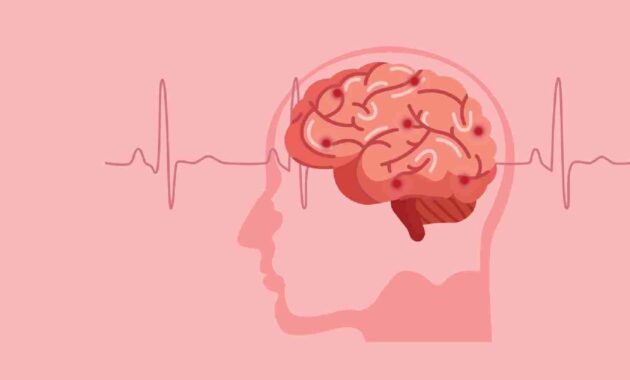A stroke happens when the blood flow through the brain changes. When the blood helps the oxygen and nutrients to reach the brain cells. Any disruption in the blood flow can disrupt the flow of oxygen to the cells and make them die. Around 18 lakh cases of stroke are reported in India, according to the Indian Stroke Association. In 2023, a report from AIIMS revealed that a stroke occurs approximately every 40 seconds, and a stroke-related death happens every 4 minutes. Stroke is more common than we realise, but there are many misconceptions surrounding it.
An acute stroke is when you experience a specific problem such as weakness or numbness in one side of your body, or vision lock in one eye. It happens when the blood flow to a part of your brain or central nervous system is suddenly blocked or when there is bleeding in these areas. These symptoms occur very suddenly, within a few minutes or hours, and can sometimes have severe consequences.

Types of stroke and the importance of rapid response
Recognising the signs of a stroke and seeking immediate medical attention is crucial, particularly within the first 3-4 hours of symptom onset. There are two main types of stroke:
1. Ischemic stroke
This occurs when there is a blockage of blood flow to one or more parts of the brain. The ‘Golden hour’ refers to the crucial initial hours following symptom onset. If the symptoms are identified early, the patient can be taken to a specialised stroke centre. Here, an injection can be administered to dissolve the clot causing the blockage in the blood vessel, a process known as recanalization. This timely intervention can limit brain damage and lead to better outcomes.
2. Hemorrhagic stroke
This type of stroke involves bleeding in one or more areas of the brain. Identifying the bleed early may require urgent surgical intervention in some cases. The sooner the surgery is performed, the higher the chances of survival.
Both ischemic and hemorrhagic strokes require rapid response. In recent years, certain endovascular procedures have emerged for ischemic stroke, resembling the angioplasty performed for the heart. These procedures involve using wires and catheters to access the brain’s blood vessels. Clots can be extracted, and blocked blood vessels can be reopened. If the blood vessel is successfully reopened in a timely manner, the outcome is generally more favourable.
Understanding the symptoms of stroke and acting quickly can make a significant difference in treatment options and potential recovery.
What are the factors that increase the risk of stroke?
The risk factors for acute stroke can be classified into two categories: modifiable and non-modifiable factors.
- Non-modifiable factors, such as genetics, age, and family history, are aspects that cannot be controlled or changed.
- However, it is essential to focus on modifiable factors. Typically, elderly individuals aged 60 and above are at a higher risk of experiencing strokes. However, it is becoming increasingly common to see individuals between the ages of 30 and 40 also affected by strokes. This can be attributed to lifestyle choices such as smoking, alcohol consumption, and sedentary habits prevalent among the younger generation. These factors can lead to conditions like high blood pressure, being overweight, diabetes, and an unhealthy diet, all of which increase the likelihood of stroke. The good news is that these lifestyle habits can be modified easily, offering an opportunity to mitigate the risk of stroke.
Recognising the signs of acute stroke
Acute strokes often occur suddenly, without any warning signs. They can happen within seconds or minutes, and some patients may only experience slight discomfort or a mild headache.
There is a useful tool called FAST that helps identify the signs of a stroke:
- F – Face: If one side of the face is drooping, it could be a potential symptom of stroke.
- A – Arm weakness: If the patient is unable to lift up their arm or has weakness in it.
- S – Speech: Slurred speech or the inability to speak at all.
- T – Time: If someone displays these symptoms, it is crucial to rush them to the hospital and begin treatment.
If a patient presents with one or two of these symptoms, there is a high likelihood, about 8-9 times out of 10, that they are experiencing a stroke. Therefore, if one or more of these symptoms are present, immediate medical attention is necessary. Other signs of stroke can include visual symptoms, such as the loss of vision in one eye or a cutoff vision in half of the visual field.
Actions to take during an acute stroke
In contrast to many other medical conditions, there isn’t much scope for first aid involvement when dealing with an acute stroke. The most crucial step is to promptly recognise the symptoms and swiftly bring the patient to a medical facility for necessary treatment. Time should not be wasted. Even if you’re not completely certain whether the person is experiencing a stroke, it’s better to practice caution once you observe any symptoms or signs of a stroke.
Once at the hospital, the emergency physicians will typically recommend a scan, such as a CT scan or an MRI. The neurologist will assess the situation and determine whether the patient requires treatment such as thrombolytic injection.
#Stroke #FAST #signs #risk #factors
